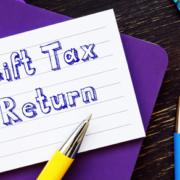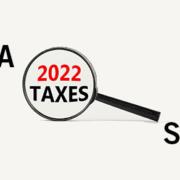To file or not to file a gift tax return, that is the question
If you made gifts last year you may be wondering if you need to file a gift tax return. The short answer: There are many situations when it’s necessary (or desirable) to file Form 709 — “United States Gift (and Generation-Skipping Transfer) Tax Return” — even if you’re not liable for any gift tax. Let’s take a closer look at the reasons why.
What gifts are considered nontaxable?
The federal gift tax regime begins with the assumption that all transfers of property by gifts (including below-market sales or loans) are taxable. It then sets forth several exceptions. Nontaxable transfers that need not be reported on Form 709 include:
- Gifts of present interests within the annual exclusion amount ($17,000 per donee in 2023, up from $16,000 in 2022),
- Direct payments of qualifying medical or educational expenses on behalf of an individual,
- Gifts to political organizations and certain tax-exempt organizations,
- Deductible charitable gifts,
- Gifts to one’s U.S.-citizen spouse, either outright or to a trust that meets certain requirements, and
- Gifts to one’s noncitizen spouse within a special annual exclusion amount ($175,000 in 2023, up from $164,000 in 2022).
If all your gifts for the year fall into these categories, no gift tax return is required. But gifts that don’t meet these requirements are generally considered taxable — and must be reported on Form 709 — even if they’re shielded from tax by the federal gift and estate tax exemption ($12.92 million in 2023, up from $12.06 million in 2022).
Are there tax traps to be aware of?
If you make gifts during the year, consider whether you’re required to file Form 709. And watch out for these common traps:
Future interests. The $17,000 annual exclusion applies only to present interests, such as outright gifts. Gifts of future interests, such as transfers to a trust for a donee’s benefit, aren’t covered, so you’re required to report them on Form 709 even if they’re less than $17,000 in 2023 ($16,000 in 2022).
Spousal gifts. As previously noted, gifts to a U.S.-citizen spouse need not be reported on Form 709. However, if you make a gift to a trust for your spouse’s benefit, the trust must 1) provide that your spouse is entitled to all the trust’s income for life, payable at least annually, 2) give your spouse a general power of appointment over its assets and 3) not be subject to any other person’s power of appointment. Otherwise, the gift must be reported.
Gift splitting. Spouses may elect to split a gift to a child or other donee, so that each spouse is deemed to have made one-half of the gift, even if one spouse wrote the check. This allows married couples to combine their annual exclusions and give up to $34,000 for 2023 (up from $32,000 for 2022) to each donee. To make the election, the donor spouse must file Form 709, and the other spouse must sign a consent or, in some cases, file a separate gift tax return. Keep in mind that, once you make this election, you and your spouse must split all gifts to third parties during the year.
The deadline to file Form 709 for 2022 is April 18. Please contact us if you’re unsure of whether you need to file a gift tax return this year.
© 2023












